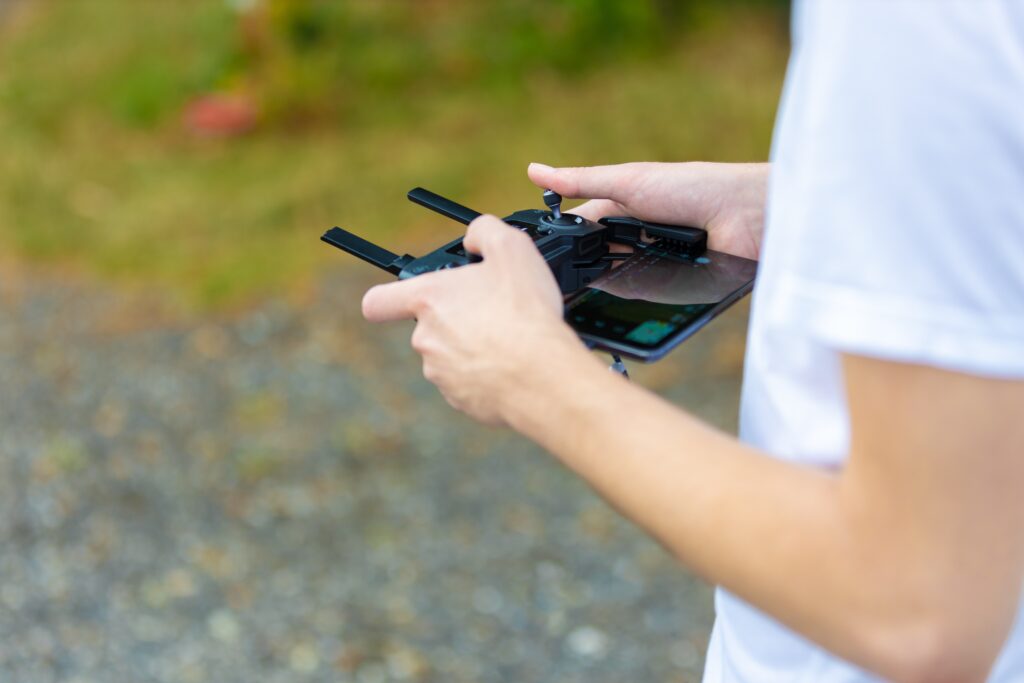Drones have become increasingly popular, and learning how to fly one can open up exciting opportunities in various fields. If you’re interested in aerial photography, videography, or even drone racing, this blog post will provide you with the essential steps to get started. So let’s dive in and learn how to become a drone pilot!
Becoming a drone pilot can be an incredibly rewarding experience. It offers opportunities to explore new perspectives, capture breathtaking visuals, and even pursue a career in industries like filmmaking, agriculture, surveying, and more. With drones becoming increasingly prevalent, mastering the skill of piloting one can open doors to exciting possibilities. Whether you’re a hobbyist or aiming for a professional path, being a drone pilot allows you to be part of a growing industry with limitless potential.
Table of Contents
Step 1: Understand the Basics
What is a Drone? A drone, also known as an unmanned aerial vehicle (UAV), is a remotely operated aircraft that can fly autonomously or be controlled by a pilot on the ground. Drones come in various shapes and sizes, equipped with cameras, sensors, and other features to capture stunning aerial footage and perform a wide range of tasks. They have become increasingly popular due to their versatility and potential applications in various industries.
Read More: How Far Can a Military Drone Fly?
Step 2: Know the Rules and Regulations
When you fly a drone in the US, there are rules made by the Federal Aviation Administration (FAA) to keep everyone safe. Here are the important things to remember:
a) Register Your Drone:
If your drone weighs more than 0.55 pounds (250 grams) but less than 55 pounds (25 kilograms), you have to register it with the FAA. This is easy to do online at the FAA’s DroneZone website.
b) Fly in the Right Places:
You should always fly your drone in approved areas. Stay away from airports, stadiums, national parks, and other restricted places. Also, respect other people’s privacy and don’t fly over their private property without asking.
c) Fly at the Right Height and Distance:
To be safe and avoid crashing into other airplanes, fly your drone at a maximum height of 400 feet above the ground. Always keep your drone in your sight so you can see it clearly.
d) Fly During the Day:
If you’re flying for fun, it’s best to do it during the daytime. Flying at night needs special permission and extra safety measures.
Step 3: Get the Part 107 Certificate
If you want to fly a drone for work or if your drone weighs more than 55 pounds (25 kilograms), you need a Part 107 certificate. Follow these steps to get it:
a) Study the Part 107 Study Guide:
The FAA has a study guide that explains everything you need to know for the Part 107 exam. It talks about things like airspace, weather, emergencies, and more. Take your time to read and understand it well.
b) Take the Part 107 Exam:
Find an FAA-approved testing center near you and schedule an exam. The exam has multiple-choice questions, and you need to get at least 70% right to pass. Study the guide and practice so you feel confident on exam day.
c) Apply for Your Part 107 Certificate:
After passing the exam, you can apply for your Part 107 certificate using the FAA’s Integrated Airman Certification and Rating Application (IACRA) system. Fill out the application, pay the fee, and provide all the required information.

Step 4: Mastering Flight Skills
Flying a drone may seem daunting at first, but with practice and patience, you’ll become a skilled pilot. Start by familiarizing yourself with the basic controls—throttle, pitch, roll, and yaw—and practice in open spaces away from obstacles. Gradually progress to more complex maneuvers, such as hovering, turning, and navigating different altitudes. Remember, practice makes perfect! As you spend more time flying, you’ll become comfortable with the controls and develop the ability to maneuver your drone with confidence.
Step 5: Expanding Your Drone Skills
Once you’ve mastered the basics and obtained the necessary certifications, you can expand your drone skills further. Consider joining local drone communities or online forums to connect with other pilots, share experiences, and learn new techniques. These communities can provide valuable insights, tips, and guidance to help you enhance your drone piloting abilities. Additionally, explore different styles of aerial photography or videography to unleash your creativity and build a portfolio that showcases your unique perspective.
Table: Essential Drone Flying Tips
| Tips | Description |
| Start in open spaces | Begin your practice sessions in wide open areas away from obstacles. |
| Fly in good weather | Avoid flying in strong winds, rain, or other adverse weather conditions. |
| Begin your practice sessions in wide-open areas away from obstacles. | Monitor the drone’s battery level and return to the ground in time. |
| Respect privacy | Be mindful of people’s privacy and avoid flying over restricted areas. |
| Learn emergency procedures | Familiarize yourself with emergency landing techniques and safety protocols. |
Conclusion
Becoming a drone pilot is an exciting journey that offers endless possibilities. By following the steps outlined in this guide, you’ll gain the necessary knowledge and skills to navigate the drone world safely and legally. Remember, practice and patience are key to mastering flight maneuvers and capturing stunning aerial footage. So get ready to take to the skies and embark on your drone piloting adventure. Always fly responsibly and with respect for others, the environment, and the law.
FAQs (Frequently Asked Questions)
1. What are the requirements to become a certified drone pilot?
To become a certified drone pilot, one must pass the FAA knowledge test, be at least 16 years old, and obtain a Remote Pilot Certificate.
2- How long does it take to become a drone pilot?
The duration varies based on the training program, but on average, it can take a few weeks to a few months.
3- Can I fly a drone commercially without certification?
No, commercial drone operations require a Remote Pilot Certificate from the FAA.
4- Are there any age restrictions for obtaining a Remote Pilot Certificate?
Yes, you must be at least 16 years old to obtain the certificate
6. How much does it cost to become a certified drone pilot?
The FAA knowledge test fee is typically around $150. However, additional costs may arise from preparatory courses, drone registration, and any equipment or software you might need.
7. Do I need to renew my Remote Pilot Certificate?
Yes, to maintain an active Remote Pilot Certificate, you must pass a recurrent knowledge test every two years.
8. Can I fly my drone outside the U.S. with an FAA certification?
The FAA certification is valid for the United States. If you plan to operate a drone in another country, you’ll need to check that country’s regulations and obtain the necessary permissions or certifications.
9. What happens if I violate FAA drone regulations?
Violating FAA regulations can result in penalties, including fines and potential legal action. The severity of the penalty often depends on the nature of the violation.
10. Do I need insurance to operate a drone commercially?
While the FAA doesn’t mandate insurance, it’s highly recommended for commercial drone operators. Insurance can cover potential damages or liabilities arising from drone operations.
11. Can I fly a drone in restricted airspace?
Generally, no. However, with the FAA’s LAANC (Low Altitude Authorization and Notification Capability) system, drone pilots can request and receive real-time authorization to fly in controlled airspaces near airports.
12. What’s the difference between recreational and commercial drone flying?
Recreational flying is for personal enjoyment without any monetary gain, while commercial flying involves using the drone for business purposes, such as aerial photography, inspections, or surveillance.
13. Are there any physical or health requirements to become a drone pilot?
While there’s no formal medical examination like manned aircraft pilots, drone pilots must self-certify that they don’t have any medical condition that would interfere with the safe operation of a drone.
14. Can I fly a drone at night?
As of April 2021, drone pilots can fly at night under the FAA’s Part 107 rules, provided they have completed the appropriate training and their drones are equipped with anti-collision lights visible for up to 3 miles.
15. What should I do if my drone crashes or causes damage?
If a drone causes injury or property damage, it’s essential to report the incident to the FAA and any relevant local authorities. It’s also crucial to have contact details and insurance information on hand.
Mehedi Miraz is the creative mind behind PrideGadget.com. With an insatiable passion for gadgets, he crafts captivating blog posts that mesmerize readers. His vast knowledge in technology guarantees informative and inspiring content, making him a go-to for gadget enthusiasts everywhere.






